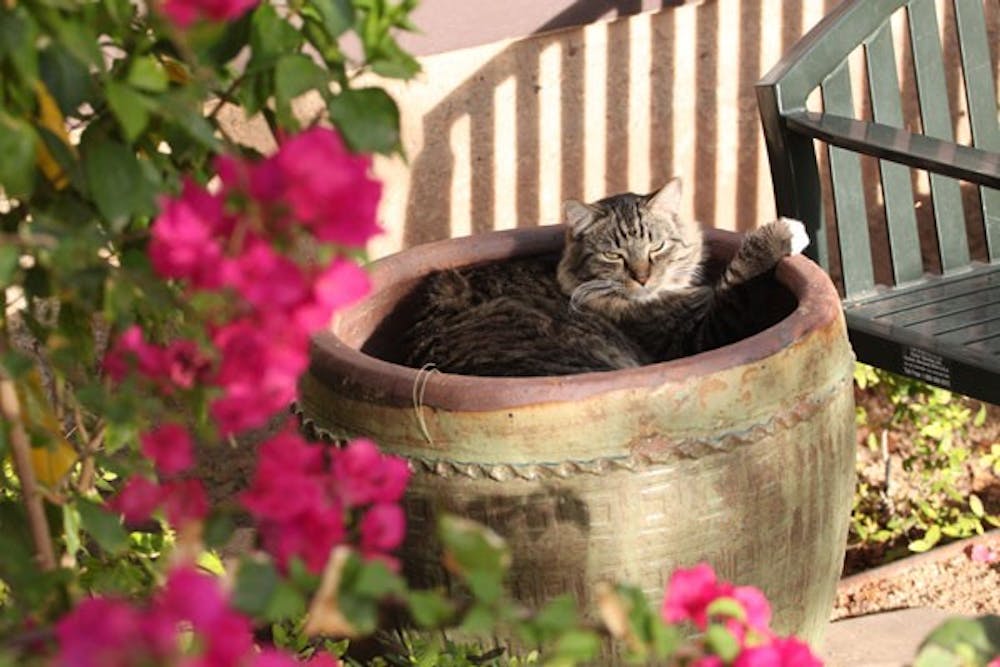It’s not unusual to cross paths with a cat at ASU.
Arizona’s climate allows for cats to breed two to three times each year, and with litters of up to seven kittens, they can overwhelm a campus like Tempe — quickly becoming a nuisance and potential health problem.
But for more than nine years, the organization Mildcats has been the first responder to campus cat problems, managing to stabilize the feline population on all four campuses despite a rising population Valley-wide.
Last year, Maricopa County Animal Care and Control took in more than 14,000 cats — so many that they named 2010 “Year of the Cat.” More than half of the animals had to be euthanized, MCACC spokeswoman Aprille Hollis said.
The county’s cat problem, however, doesn’t appear to be spilling over to ASU’s campuses. That’s especially surprising for the Tempe campus, which Environmental Health and Safety associate director Rob Ott said is the “perfect” environment for stray and feral cats.
This might have a lot to do with Mildcats, which is made of student and faculty volunteers.
The cat population has stabilized since Mildcats began trapping, neutering and either finding a home for cats or releasing them back where they were found. The group manages the populations on each campus and the areas around the campuses.
Mildcats started in February 2002 with Mr. Gold, the first cat they trapped, neutered and released.
Ott said the cat problem was severe at ASU before Mildcats, when many students would simply abandon their pets while moving.
“Mildcats has managed those [cat] populations pretty well and there’ve been very few complaints,” Ott said.
Cissy Longmore, a Mildcats volunteer and ASU faculty member, estimates that the Tempe campus’ population is between 60 and 80 cats, a figure based on a survey done three years ago.
The Tempe cat colony is comprised mostly of feral cats, Longmore said, adding that there is no visual difference between stray and feral cats.
“Mostly it’s behavior,” she said.
If the cat shies away, it’s probably feral, meaning it has grown up in the wild. Stray cats have been domesticated before being lost or abandoned, meaning they tend to be more familiar with humans and might come up to a person, Longmore said.
The Tempe campus’ cat population is a result of the group release of cats after sterilization when adoption isn’t an option.
Ott said one year the group’s efforts led to the adoption of 200 cats.
The creation of a cat colony on campus does have its benefits. It addition to keeping rodents away, the group’s work saves ASU a good amount of money. Otherwise the University would have to hire a private business to trap and remove the animals.
MCACC charges $95 to take a cat, which is euthanized if not adopted in three days.
Unlike the Tempe cat colony, Mildcats membership fluctuates, Longmore said. The group is about to do a renewal of Mildcats members and is always looking for new members to help, and sponsors to help cover costs.
Those interested in volunteering or donating to the organization can find Snowshoe, Grinch, Harley and other Tempe campus feral cats at www.mildcatsatASU.org.
Reach the reported at cbleone@asu.edu





